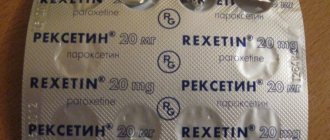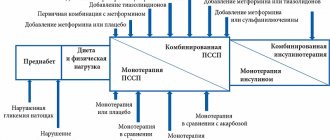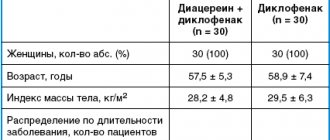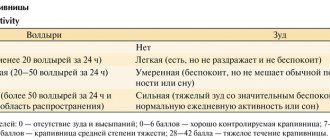When is Triazavirin indicated?
Triazavirin is an antiviral drug. It was developed by institutes of two academies of sciences, RAS and RAMS. Chupakhin O.N., Kiselev O.I., Charushin V.N. worked on the medicine. The product has undergone clinical trials in 11 large accredited clinical centers. The registration certificate was issued in 2014.
The drug belongs to the azoloazine class. It is the only drug from this group. The active component of the drug is riamilovir, which directly fights viral agents.
Triazavirin is indicated for the treatment and prevention of respiratory diseases.
The drug is effective for:
- Flu (H3N2, H5N1, H1N1, H5N2, H9N2);
- Parainfluenza;
- Corey;
- Respiratory sensitial virus;
- Dengue fever, West Nile fever;
- Tick-borne encephalitis.
The product can be used for preventive and therapeutic purposes for COVID 19.
The medication is indicated only for adults. It is not used in pediatric practice due to insufficient evidence base.
How is Triazavirin good for COVID-19?
According to the mechanism of action, the drug is active against RNA viruses. The COVID-19 genome consists of a single strand of RNA.
The drug is recommended for use for preventive purposes. It allows you to stop the proliferation of microorganisms that have penetrated the host cells. The medication is especially recommended for people who are in contact with patients with COVID-19 (relatives of coronavirus patients, doctors, nurses, etc.).
Triazavirin for moderate coronavirus can be used as part of complex therapy. The drug reduces the severity of symptoms and shortens the duration of therapy. Can be used as monotherapy for mild forms of coronavirus infection.
Registration number: Trade name: TRIAZAVIRIN® International nonproprietary or generic name: riamilovir Dosage form: capsules
Composition 1 capsule contains: Active ingredient: Riamilovir (TRIAZAVIRIN®) - 250 mg Excipients: Calcium stearate - 2 mg Weight of capsule contents - 252 mg Composition of capsule shell Capsule (body) No. 1: titanium dioxide (E171), quinoline yellow dye ( E104), sunset yellow dye (E110), medical gelatin. Capsule (cap) No. 1: titanium dioxide (E171), azorubine dye (E122), medical gelatin. Weight of capsule with contents - 328 mg
Description Hard gelatin capsules size No. 1, yellow body and red cap. The contents of the capsules are fine-crystalline powder or granules of yellow or yellow-green color.
Pharmacotherapeutic group Antiviral agent. ATX code: J05AX.
Pharmacological properties Pharmacodynamics The active substance of the drug TRIAZAVIRIN® - riamilovir - is a synthetic analogue of purine nucleoside bases (guanine) with a pronounced antiviral effect. It has a wide spectrum of antiviral activity against RNA-containing viruses. The main mechanism of action of the drug TRIAZAVIRIN® is inhibition of the synthesis of viral RNA and replication of genomic fragments. Pharmacokinetics: After oral administration, it is rapidly absorbed from the gastrointestinal tract. The maximum concentration (Cmax) is reached on average after 1–1.5 hours. Cmax with the recommended dosage regimen averages 4.8 mcg/ml. The AUC value (area under the concentration-time pharmacokinetic curve) of blood is 12.8 mcg/h*ml. The half-life (T1/2) is 1–1.5 hours. From 15 to 45% of riamilovir is excreted unchanged by the kidneys. The average calculated clearance is 246 ml/min.
Indications for use As part of complex therapy for influenza and other acute respiratory viral infections in adult patients.
Contraindications - hypersensitivity to the components of the drug; - pregnancy; - period of breastfeeding; - children under 18 years of age (efficacy and safety have not been determined); - renal/liver failure (efficacy and safety have not been determined).
Use during pregnancy and breastfeeding Due to the lack of strictly controlled studies in humans, the use of the drug during pregnancy is contraindicated (see section “Contraindications”). The use of the drug during breastfeeding has not been studied, therefore, if it is necessary to use the drug during lactation, breastfeeding should be stopped.
Method of administration and dosage TRIAZAVIRIN® is taken orally, regardless of meals, with a sufficient amount of drinking water. The capsule should be swallowed whole; it is not recommended to chew or crush the capsule. Taking the drug must be started no later than the 2nd day from the onset of the disease (manifestation of clinical symptoms of influenza and other acute respiratory viral infections). Recommended dose: for influenza and other acute respiratory viral infections: 1 capsule (250 mg) 3 times a day for 5 consecutive days. Maximum single dose: 1 capsule (250 mg). Maximum daily dose: 3 capsules (750 mg). If there is no improvement within 5 days of treatment, or the symptoms worsen, or new symptoms appear, you should consult your doctor. Use the drug only according to the indications, method of administration and in the doses indicated in the instructions.
Side effects Blood and lymphatic system disorders: increased number of eosinophils in the blood. Immune system disorders: allergic reactions (rash). Nervous system disorders: headache. Gastrointestinal tract disorders: dyspepsia (nausea, vomiting, bloating, pasty stools, flatulence, heartburn, abdominal pain, diarrhea, dry mouth). Renal and urinary tract disorders: increased erythrocytes, leukocytes, squamous epithelium in the urine, presence of bacteria in the urine. Laboratory and instrumental data: increased levels of alanine aminotransferase (ALT) and aspartate aminotransferase (AST) in blood plasma. General disorders and reactions at the injection site: weakness. If you experience the side effects listed in the instructions, or they get worse, or you notice any other side effects not listed in the instructions, tell your doctor. Overdose Symptoms: nausea, vomiting, dyspeptic disorders, stomach pain. Treatment: symptomatic therapy. If these symptoms occur, you should stop taking the drug and consult a doctor.
Interaction with other drugs No special clinical studies have been conducted to study interactions with other drugs. If you are using any medications (including over-the-counter medications), consult your doctor before using TRIAZAVIRIN®.
Special instructions The drug TRIAZAVIRIN® contains sunset yellow (E110) and azorubine (E122) dyes, which can cause allergic reactions. The effect on the ability to drive vehicles and machinery has not been studied, however, based on the range of adverse reactions, no effect on these types of activities is expected.
Release form Capsules, 250 mg. 10 capsules per blister pack made of polyvinyl chloride film and printed varnished aluminum foil. One or two blister packs, together with instructions for medical use of the drug, are placed in a cardboard pack.
Storage conditions : Protected from light at a temperature not exceeding 25 °C. Keep out of the reach of children. Shelf life: 5 years. Do not use after the expiration date.
Conditions of release Dispensed without a prescription.
Side effects
Like any medicine, Triazavirin can have unwanted effects. List of consequences of use:
- eosinophilia;
- allergic reaction (rashes on the skin);
- headache;
- dyspepsia (thin stool, vomiting, nausea, bloating, gastralgia, dry oral mucosa);
- the appearance of red blood cells, bacteria, epithelial cells in the urine;
- increased levels of liver enzymes (ALT, AST).
- impotence.
If symptoms appear and intensify, you should consult a doctor to adjust your therapy. In case of an overdose, severe abdominal pain, dyspepsia, vomiting, and nausea occur.
Similar products
The drug has non-structural analogues. List of similar medications:
- Anaferon - the medicine contains antibodies to human interferon gamma, which increase the overall immune status, is produced in the form of tablets, and is inferior in effectiveness to Triazavirin;
- Arbidol - produced in tablet forms or powder for making a suspension, contains umifenovir;
- Viferon - available in rectal suppositories, is highly effective against viral infections, can be used at any stage of the disease, is relatively safe; used in pediatric practice, including neonatology;
- Kagocel is an interferon inducer that stimulates the synthesis of its own interferons.
Triazavirin or Arbidol - which is better?
There is a lot of controversy surrounding these two drugs. The mechanism of action of drugs is aimed at preventing the proliferation of viral agents. Triazavirin fights viruses more effectively, unlike Arbidol. The disadvantage of riamilovir is:
- Lack of children's uniform;
- Toxicity of the drug during simultaneous use with purine analogues;
- There is a load on the liver and kidneys;
- Insufficient research has been conducted regarding the effectiveness and possible adverse effects.
Triazavirin is a relatively new antiviral drug that is currently still under study. Today it is recommended for use against coronavirus infection, all strains of influenza viruses, tick-borne encephalitis and other pathogens. The medicine copes well with infections, but has a number of side effects. The drug is also prohibited for children, pregnant women, lactating women, and patients with liver and kidney pathologies. These restrictions significantly narrow the range of its use, because older people, children, and patients with chronic diseases are more susceptible to viral infections.
Triazavirin caps 250 mg x20
MINISTRY OF HEALTH OF THE RUSSIAN FEDERATION
,
INSTRUCTIONS FOR MEDICAL ADMINISTRATION
,
Triazavirin®
,
Registration number:
Trade name: Triazavirin®
Group name: sodium methylthionitrooxodihydrotriazolotriazinide
Dosage form: capsules
Compound
Active substance:
methylthionitrooxodihydrotriazolotriazinide sodium dihydrate (triazavirin®) - 250 mg
Excipients:
Calcium stearate – 2 mg
Weight of capsule contents: 252 mg
Composition of the capsule shell:
Capsule (body) No. 1: titanium dioxide (E171), quinoline yellow (E104), sunset yellow (E110), medical gelatin.
Capsule (cap) No. 1: titanium dioxide (E171), azorubine (E122), medical gelatin.
Weight of capsule with contents - 328 mg
Description: hard gelatin capsules size No. 1, yellow body and red cap. The contents of the capsules are fine-crystalline powder or granules of yellow or yellow-green color.
Pharmacotherapeutic group:
Antiviral agent
ATX code: J05AX
Pharmacological properties
Pharmacodynamics
The active ingredient of the drug Triazavirin® is a synthetic analogue of purine nucleoside bases (guanine) with a pronounced antiviral effect. It has a wide spectrum of antiviral activity against RNA-containing viruses.
The main mechanism of action of the drug Triazavirin® is the inhibition of the synthesis of viral RNA and the replication of genomic fragments.
Pharmacokinetics
After oral administration, it is quickly absorbed from the gastrointestinal tract. The maximum concentration (Cmax) is achieved on average after 1-1.5 hours. Cmax with the recommended dosage regimen averages 4.8 mcg/ml. The AUC value (area under the pharmacokinetic concentration-time curve) of blood is 12.8 mcg/h*ml. The half-life (T1/2) is 1-1.5 hours. From 15 to 45% of sodium methylthionitrioxodihydrotriazolotriazinide is excreted unchanged by the kidneys. The average calculated clearance is 246 ml/min.
Indications for use
As part of complex therapy of influenza in adult patients.
Contraindications
- hypersensitivity to the components of the drug,
- pregnancy,
- breastfeeding period,
- children under 18 years of age (efficacy and safety have not been determined),
- renal/liver failure (efficacy and safety have not been determined).
Use during pregnancy and breastfeeding
Due to the lack of strictly controlled studies in humans, the use of the drug during pregnancy is contraindicated (see section “Contraindications”).
The use of the drug during breastfeeding has not been studied, therefore, if it is necessary to use the drug during lactation, breastfeeding should be stopped.
Directions for use and doses
Triazavirin® is taken orally, regardless of meals, with a sufficient amount of drinking water. The capsule should be swallowed whole; it is not recommended to chew or crush the capsule.
Taking the drug must be started no later than the 2nd day from the onset of the disease (the appearance of clinical symptoms of influenza).
The recommended dose is 1 capsule (250 mg) 3 times daily for 5 consecutive days. If necessary, on the recommendation of a doctor, treatment can be continued for up to 7 days.
The maximum daily dose is 3 capsules (750 mg).
Side effect
Allergic reactions.
From the digestive system - dyspeptic disorders (flatulence, diarrhea, nausea, vomiting).
Overdose
Symptoms: nausea, vomiting, dyspeptic disorders, stomach pain.
Treatment: symptomatic therapy.
If these symptoms appear, you must stop taking the drug and consult a doctor.
Interaction with other drugs
Interaction with analogues of purine and pyrimidine bases during antitumor therapy can lead to increased toxicity of the drug. When used simultaneously with ribavirin, a reduction in the dose of ribavirin is required.
special instructions
The effect of the drug on the ability to drive vehicles and machinery
Not studied, however, based on the spectrum of adverse reactions, no effect on these activities is expected.
Release form
Capsules, 250 mg.
10 capsules per blister pack made of polyvinyl chloride film and printed varnished aluminum foil. One or two blister packs along with instructions for use are placed in a cardboard pack.
Best before date
5 years. Do not use after the expiration date stated on the packaging.
Storage conditions
In a place protected from light at a temperature not exceeding 25°C.
Keep out of the reach of children.
Vacation conditions
Dispensed by prescription.








